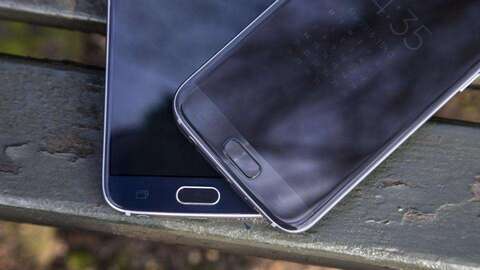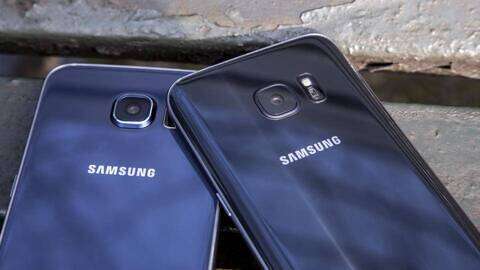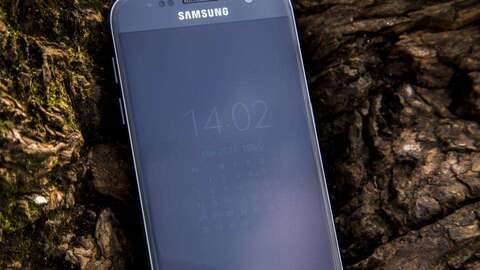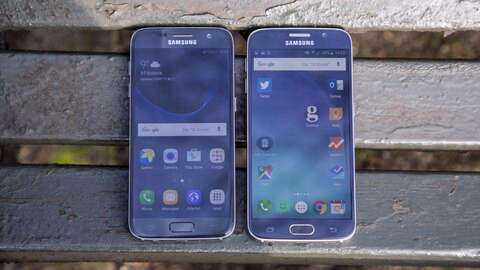Samsung Galaxy S7 vs Galaxy S6 - is it worth upgrading?
All of the flagship phones get a yearly update. While each upgrade can cause people with previous years' models to get serious phone envy, it's not always worth upgrading. Not every generation of handset introduces new features that you absolutely have to have, so making the upgrade doesn't always make a lot of financial sense. This year, Samsung is really giving people a difficult decision to make with its brand-new Galaxy S7 . From the outside, it looks nigh-on identical to last year's S6 , but inside its a completely different beast. Samsung has listened to its customers and has decided to address the issues that people had with the Galaxy S6. That means that this year, you get a bigger battery. OK, it's not the removable battery of the S5, but this upgrade, at least, reduces the need to charge so often. More importantly, you can upgrade the phone's storage with a cheap microSD card, which you couldn't do on the S6.
With plenty of other improvements, including a faster processor and a better camera, the S7 really is a big step up from the S6. In this article, I'm going to help you work out if it's a big enough improvement to make it worth upgrading to from the S6. I've concentrated on the flat versions of each handset, as both the S6 and S7 are also available with fancy, curved edged displays, the S6 Edge and S7 Edge . To take a closer look at how the S7 differs from the S7 Edge, check out our S7 vs S7 Edge article.
Design
Materials: The first thing you won't notice about the S7 is how different it looks to the S6. Some might be disappointed by this, but let's not forget that Apple, for example, uses exactly the same design two years in a row, so it's not exactly unexpected that the S7 doesn't have a more distinctive design. It's also worth noting that the Galaxy S6 was a fantastic-lo9oking phone, and if it ain't broke…

There are some very subtle differences, but none that will make you definitely choose one over the other. For instance, the S7's metal frame is now more rounded than the slightly more angular S6, and its fingerprint sensor doesn't have a prominent silver border round it, but otherwise both phones look almost identical (and attract the same number of grubby fingerprints on their rear glass panels).
There are plenty of under-the-surface design tweaks to be excited about, however. For starters, the Samsung Galaxy S7 is now water-proof and dust-proof to IP68 standards. This means the handset can survive 30 minutes of immersion in 1.5m of water - plenty good enough for an icky toilet fumble. Even better, you don't need to have sealed off its ports beforehand with tacky rubber flaps, as the chassis has been completely sealed both inside and out.
Dimensions: The S7 measures 142x70x7.9mm and weighs 152g, which makes it slightly thicker and heavier than last year's S6, which comes in at 143x70x6.8mm and 132g. This is likely to be down to the larger battery that is installed in the phone (more of that later).

On both new models, the camera bump is smaller than last year - down to a practically non-existent 0.46mm - making the whole device look slimmer and less clunky. It's a small thing, but it does mean the phone now sits (almost) flat on a table or desk, which always irked us before.
Conclusion: Externally, there aren't not a lot of differences between the S6 and S7 models, but we prefer the new S7 Edge's reduced camera bump and the IP68 certification is a big improvement. It's close, but the clear winner is the S7.
Display
Screen size and resolution: The S7 has the same 5.1in Super AMOLED screen as last year's S6 and both use the same QHD (2,560x1,440) resolution, thereby giving them the same pixel density of 577ppi.
As a result, the quality of each screen is largely identical. Both phone displays cover a full 100% of the sRGB colour gamut and both can produce perfect 0.00cd/m2 blacks. Contrast is also very high, and its brightness levels both hit a peak of around 350cd/m2. However, both phones can go beyond this max brightness level if it's switched to auto and you're outside in bright sunshine, as the S6 will provide a temporary boost to around 577cd/m2, while the S7 can hit around 470cd/m2.

The only major difference comes when you look at the screen's extra software, as the S7 has a rather handy always-on display. This means it can display things like the time, date, battery status and calendar information while the screen is turned off. This is really useful if all you want to do is glance at the time while your phone's on the table, and because AMOLED pixels only consumer power when they're switched on, it only draws a very minute amount of power.
Conclusion: This one's too close to call. While the S7's always-on display is useful, the overall screen quality is exactly the same. In this case, it's a draw.
Performance, battery life and storage
Processor: In the UK, Samsung is using an octa-core Exynos 8890 SoC, which is made up of two quad-core chips running at 2.3GHz and 1.6GHz respectively. This is a 64-bit processor, manufactured using an efficient 14nm process. Samsung claims 30% better CPU performance and 64% better graphics performance than the S6 that came equipped with the octa-core 1.5GHz Samsung Exynos 7420 processor.
In our own benchmark tests, the difference in speed was plain to see, as the S7 scored 2,115 and 6,437 in Geekbench 3's single and multicore tests, while the S6 only scored 1,427 and 4,501.
Likewise, the S7 steamed ahead in GFX Bench GL's offscreen Manhattan 3.0 test, producing 2,336 frames (or 38fps) compared to the S6's 1,429 frames (23fps). This all translates to much smoother, slicker performance on the S7, and Samsung's Marshmallow-based TouchWiz interface as never felt so quick.
Storage: The final major design change here is the addition of a microSD slot to the S7, so you can upgrade the internal memory from its default 32GB or 64GB. This is one of those rare occasions where a tech company goes back on a previous decision, realising that people willing to shell out £500+ on a smartphone might actually want a bit of flexibility.
Battery life: Great news! The Samsung Galaxy S7 has a huge 3,000mAh battery, which is 17% bigger than the S6's 2,550mAh pack.
Unsurprisingly, the S7 has a lot more stamina than the S6, as it lasted an incredible 17h 48m in our continuous video playback test. The S6, on the other hand, only managed 13h 37m. This is still a good score, but the S7 will be more reliable over the course of a heavy day's usage.
Conclusion: As you'd expect, it's another win for the S7. It's faster, has expandable storage and its bigger battery lasts a lot longer. That's not to say that the S6 is now useless: it's still extremely fast and the battery life's decent, so if you're a current S6 owner and are still very happy with your phone's performance, you may not find much reason to upgrade to the S7 right away.
